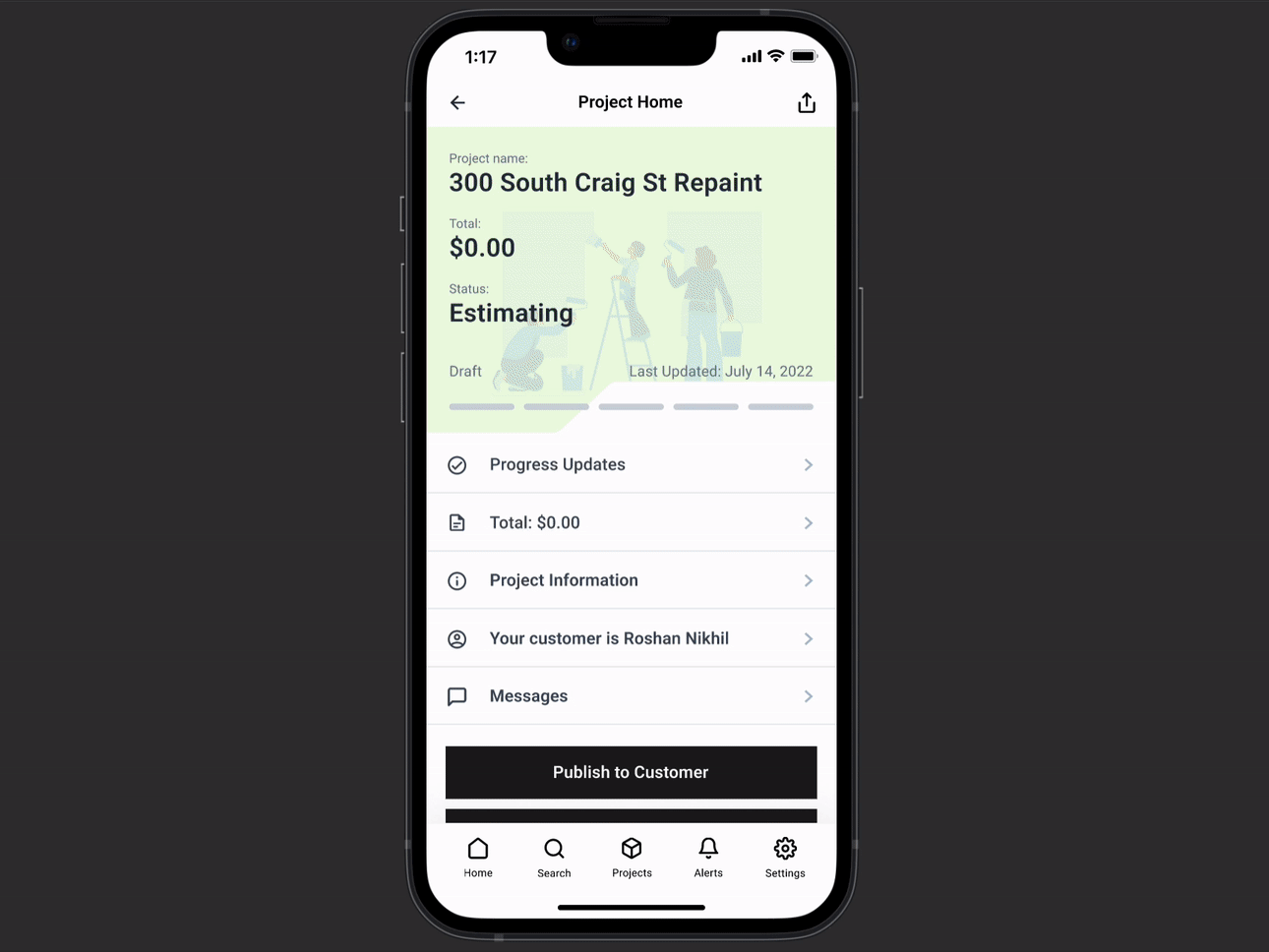PPG Insync is multi-format digital platform to help small painting business owners facilitate customer interaction through documentation, trust building, and communication. Completed as part of my Master’s Capstone project, I collaborated with 4 other researchers and designers within my cohort to consult for a digital innovation team at PPG.
🎨 PPG InSync
Clients:
Timespan:
Jan 2022 - Aug 2022
Role:
Product Management & Design
How can PPG provide new value to their architectural coatings business customers and end consumers through a digital tool or service?
Problem:
Informed by our research into the challenges faced by the painting business & end consumer relationship, we tailored our solution to solve pain points like project data documentation, active-project communication, and a new way of thinking about the paradigm of an ‘estimate’ or ‘quote’. The platform enables features like multi-modal ways of collecting and managing data, project project progress tracking, and
Solution:
A paint-industry specific tool for painting businesses to manage heir customer relationships, fostering a better customer interaction and provided valuable data for PPG.
PPG, as a manufacturer of a commodity product like paint, is undergoing a digital transformation and looking for new ways to serve their customers and end consumers. Our project brief assumed that painting businesses had difficulty estimating the amount of paint for projects and were looking for advanced ways of doing this more accurately. Early in the research phase, we reframed the problem space to discover other needs the painting businesses have.
PPG’s Digital Transformation
PPG is a paint & coatings manufacturing company undergoing digital transformation to provide new products and services to it’s customers.
Historically, PPG’s business has been centered on engineering paint and coatings for a variety of industries like automotive, architectural, marine. These products have become commodities, and PPG aims to innovate within the digital space to remain competitive.
PPG’s digital strategy
Digital innovation model
Reframing assumptions through research & need-finding
PPG came to my team with the desire to use emerging tech to estimate paint quantity for their contracting business customers. Through generative research that I conducted, we found that these users didn’t struggle greatly with this, and that they had more important and pressing challenges.
Our research challenged the assumptions that PPG had at the conception of the project, and helped us reframe ours and PPG’s understanding of the problems that users within painting businesses face. I planned and executed a research plan that included both secondary and primary research, using methods like guerrilla research, semi-structured interviews, contextual inquiry, and early-stage need and concept testing.
Reframing the problem
02 Inspiration ↔ Ideation
Generating Research Insights
Our research with users from painting businesses as well as their customers led us to 4 different insights, providing value to PPG through deep customer understanding.
01 Reframing
Estimating the amount of paint for a project is not a major source of risk for small painting businesses.
02 Distrust
The relationship between painting business and their customers starts from a place of distrust.
03 Oxymoron: Exact estimates
Both small painting business owners and their customers tend to treat estimates as more definitive than they truly are.
04 Lack of business acumen
Both small painting business owners and their customers tend to treat estimates as more definitive than they truly are.
Insights → Design Goals
As the product lead, I bridged the gap between research and design to generate product goals that would guide the ideation phase.
01 Organization and access
Small painting business owners currently document the on-site estimation in a way that lacks organization and accessibility.
02 Facilitate Communication
Small painting business owners must work to gain trust of their first-time customers before and during the project.
03 Flexibility
Customers tend to treat an estimates as a fixed agreement, which is not adaptable to real conditions of a project.
After research, how do you decide what to design?
I led two different workshops with the client: prioritize customer needs vs. their business goals, prioritize feature ideas the design team generated.
We found that PPG had conflicting values with their customers and this led us to our focus on providing a product that would facilitate customer interaction for the painting business and their customers (home/property owners).
virtual whiteboard problem prioritization with risk / feasbility / business viability
Mapping a feature development strategy, based on essential features on which others are predicated.
virtual whiteboard feature shopping workshop
03 Solution
Building out a feature
01 Organization and access
Insight: Small painting business owners approach the running of their business like painters, not business experts.
Goal: Projects generate a lot of data, improve the organization, storage, and access of this data.
Building out a feature: Idea development through lean experimentation
Sketches to lo-fi prototype for Wizard of Oz testing.
I led the iterative design experimentation for a core feature: project documentation. Over a series of short sprints, I tested ideas about how we could improve this part of the workflow for painting businesses.
The team felt that project documentation was the necessary precedent to the other features that we wanted to include because individual project data was necessary to make the other features happen and also provided business value to PPG. Additionally, it presented the most risk due to the diversity of estimation and project documentation methods within the painting industry. to test an NLP concept, we employed and coordinated lean prototyping methods by combining pre-existing products and faking complex backend interactions through Wizard of Oz testing.
Product Features
Corresponding to the original design goals, we developed 3 key features as part of a customer-business interaction platform.











